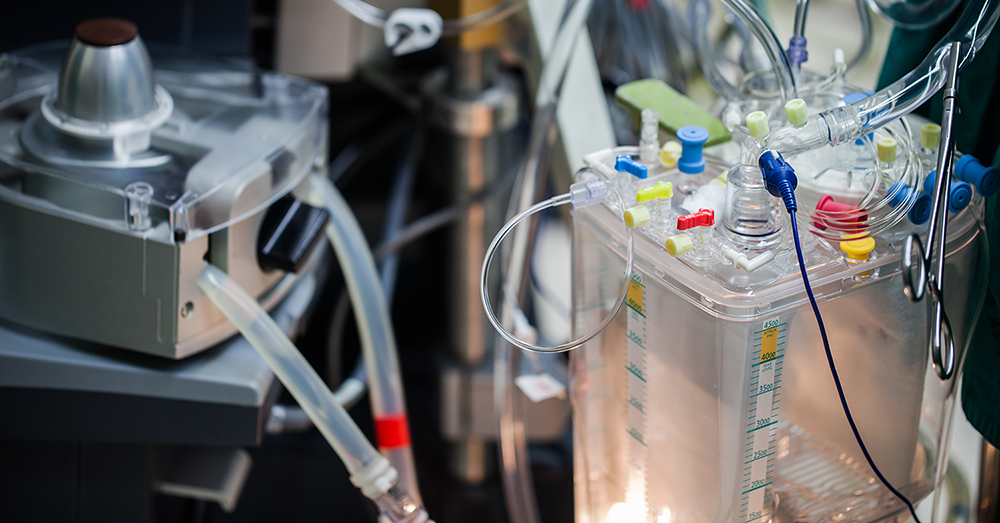Gone are the days when you can ‘just put the student by that side of the machine’ or hope you don’t have a 12-hour case so that ‘you can still drive home level-headed.’ Instead, the common practice of running anesthesia through your oxygenator requires scavenging by The Centers for Disease Control and Prevention (CDC) and The National Institute for Occupational Safety and Health (NIOSH).
Before pump-mounted scavengers, there were two standard practices for WAGD. The first relied on working in a laminar flow operating room. A laminar flow operating room uses strategic airflow to provide clean air directly on top of the surgical field by pushing air outward toward everyone outside the sterile field (like the perfusionist). Given the high airflow needed and limited fresh air in the system, air from the OR goes through specialty filters and re-enters the OR above the patient. These filters capture debris, dust, and bacteria, but inhaled anesthetics go right through them as the molecule size is tiny.
The second common practice utilizes a standard wall suction regulator attached to an open Y-connector, linking it to the oxygenator. I have gotten questions like, “how many millimeters of mercury equals a four-liter per minute sweep flow?” Suction regulators control pressure, not flow. Let me repeat; suction regulators control pressure; they do not control flow. Adjusting pressure to achieve a target flow when you don’t have a flowmeter to measure it is a fool’s errand. This method of WAGD could result in a pressure differential, which could lead to blood pulling across the fibers of your oxygenator. Although some specialty oxygenators have a pressure differential across them, the vast majority in clinical use are NOT rated to have a negative pressure differential across the hollow fibers.
The proper technique is to scavenge waste gas using just enough flow to remove the output from the oxygenator. You would seal the oxygenator in an ideal world and have waste gas flow equal sweep flow. However, much like sealing a cardiotomy reservoir includes substantial risks, so would sealing an oxygenator. Luckily most oxygenators have sufficient vents that prevent positive pressure. The goal of the pump-mounted WAGD, like that on the Boehringer Laboratories VAVD Controllers, is to be slightly above the sweep flow, to gently pull the anesthetic gas and room air into the scavenge line. By doing so, you safely and successfully scavenge waste anesthetic gas and protect your operating room personnel.
Back to Blog


